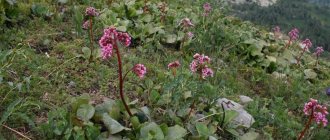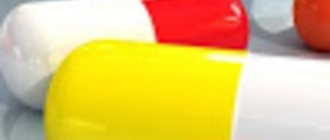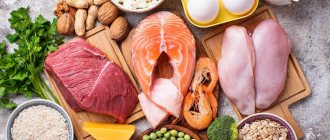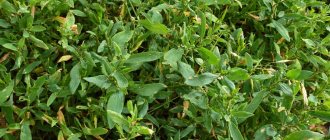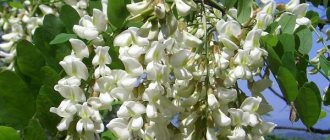Quercetin is one of thousands of phytochemicals or phenolic compounds found naturally in a variety of plants. It is broadly classified as a flavonoid and, more specifically, a flavonol. All phenolic compounds contain at least one aromatic ring with one or more hydroxyl groups. (22794138) Flavonols, which should not be confused with flavanols,
have a double bond between C2 and C3 and a ketone group at C4. Flavonols are one of the most common subgroups of flavonoids, and quercetin has at least 279 different glycosidic (sugar group) combinations.(22254006) As a supplement, quercetin is usually in the aglycone form—without the sugar group, which is poorly absorbed; it can also be found in rutin or glycoside form.(22332099) Quercetin glucosides such as isoquercitrin and isoquercetin have been shown to be much more bioavailable and faster absorbed than quercetin aglycone or quercetin glycosides such as rutin (quercetin rutinoside). (15182387, 15644141, 11200097, 10801919, 11151743) These quercetin glucosides have been shown to be more bioavailable than the smaller quercetin aglycone or larger quercetin glycosides such as rutin (quercetin rutinoside.)(15182387) tic quercetin and any potential benefits for health is influenced by the source and amount consumed, as well as bioavailability.(15113710) Quercetin, like other flavonoids, undergoes primary metabolism upon consumption, resulting in metabolism in the bloodstream. (21571063)
Pharmacological properties of the drug Quercetin
the flavonoid quercetin is an aglycone of many plant flavonoid glycosides, including rutin, and belongs to vitamin preparations of group P. Due to capillary-stabilizing properties associated with antioxidant, membrane-stabilizing effects, the drug reduces capillary permeability. Quercetin has an anti-inflammatory effect as a result of blocking the lipoxygenase pathway of arachidonic acid metabolism, reduces the synthesis of leukotrienes, serotonin and other inflammatory mediators. Quercetin exhibits an antiulcer effect associated with the use of anti-inflammatory drugs, and also has radioprotective activity (after X-ray and gamma irradiation). The cardioprotective properties of Quercetin are due to an increase in the energy supply of cardiomyocytes due to its antioxidant effect and improved blood circulation. The regenerative properties of Quercetin are manifested in accelerated wound healing. The drug can influence the processes of bone tissue remodeling; it exhibits persistent immunomodulatory activity. Diuretic, antispasmodic, and antisclerotic properties have also been experimentally determined. Quercetin is able to normalize blood pressure and stimulate the release of insulin, accelerate platelet aggregation, and inhibit thromboxane synthesis. Quercetin also binds to estrogen receptors. Due to estrogen-like properties (influence on proline hydroxylase, inhibition of tumor necrosis factor and synthesis of interleukins), the drug has a pro-osteoclast effect. After oral administration, the drug is well absorbed. Further pharmacokinetics of the drug have not been studied.
Expert reviews about quercetin:
- “Evidence suggests that quercetin may help performance in athletes, and may also help improve our cognitive abilities or brain alertness . I highly recommend you look into quercetin. Dr. Daniel Johnston Preventive Medicine, Department of Defense, United States Military, Comprehensive Soldier Training
- “ Quercetin has strong antioxidant, anti-inflammatory, antipathogenic and immunoregulatory effects in vitro and in animal studies. Epidemiological data indicate reduced incidence of cardiovascular disease and various types of cancer in groups with self-selected diets high in quercetin . In human studies , quercetin has been shown to lower blood pressure , and in athletes it significantly reduces the incidence of runny noses , especially during periods of heavy training and racing." Dr. David Nieman Director, Human Performance Laboratory - North Carolina Research Center
Flavonoids continue to receive considerable attention for their biological activities. Four types of flavonoids have been studied for clinical use and include: tea-derived polyphenols, quercetin and its various molecular relatives, citrus bioflavonoids, and proanthocyanidins found in grapes and some pine species.(8847003) Thanks to this attention, quercetin, one of the most abundant flavonoids , found in foods, has become perhaps the most studied flavonoid to date.(26393898)
Quercetin formula C15H10O7
Useful properties of quercetin
Quercetin glucosides such as isoquercitrin have been shown to be much more bioavailable. Quercetin has multiple effects on immune system function beyond its best known mast cell stabilizing activity. Transcription factors involved in immune function are controlled by cytokines, and quercetin appears to play a role. Cytokines are a major part of the immune system and function as mediators within the immune system and hematopoiesis, which is the process of creating new blood cells.
In vitro data demonstrate that quercetin suppresses the expression and production of cytokine genes in peripheral blood mononuclear cells, especially the expression and production of NFkappaB. (17169778, 18417116) Quercetin may block in vitro angiogenesis and other signaling pathways, including insulin-like growth factor, MAPK components, and free radical scavenging activity of quercetin, attributed to several actions. (18417116)
The ability of quercetin to absorb and bind transition metal ions affects lipid peroxidation. Removal of free radicals and reduction of inducible nitric oxide synthase activity have a supporting effect on blood circulation. Quercetin additionally supports the absorption of vitamin C. (21966156) A double-blind crossover study evaluating the effect of 150 mg of quercetin per day demonstrated support for cardiovascular health. (28082789) In macrophages, quercetin is metabolized to its active aglycone form by the enzyme glucuronidase, resulting in decreased expression of lipopolysaccharide (LPS)-induced cyclooxygenase (COX)-2. (24260490)
Dietary Sources of Quercetin Quercetin can be consumed through foods containing quercetin or through supplements. Quercetin is mainly supplied to the diet in the form of glycoside conjugates. (26740171) One of the most common glycoside forms present in plants is quercetin-3-glucoside (isoquercitrin), which is hydrolyzed in the small intestine and rapidly absorbed. (26740171)
Foods rich in isoquercitrin include leafy vegetables, broccoli, red onions, peppers, apples, grapes, black tea, green tea, red wine and some fruit juices. The amount of quercetin obtained from food primarily depends on a person's dietary habits. Research has shown that the typical Western diet provides approximately 0 to 30 mg of quercetin per day, but a diet rich in fruits and vegetables is estimated to provide more. (8847003) It is also important to note that the nutritional content of quercetin reflects differences in soil quality, harvest time, and storage conditions.
Content of quercetin 3-O-glucodise (isoquercitrin) in food products
| Black grapes (100 g) | 2.17 mg |
| Red raspberries, raw (100 g) | 3.58 mg |
| Nectarine, whole (100 g) | 0.11 mg |
| Broccoli, raw (100 g) | 1.80 mg |
| Red onion, raw (100 g) | 1.80 mg |
| yellow onion (onion) (100 g) | 0.7 mg |
| Black tea (100 ml) | 1.13 mg |
| Red wine (100 ml) | 1.14 mg |
| Plum, fresh | 0.54 mg |
| Apple [cider], peeled | 0.06 mg |
| Apple [cider], whole | 0.54 mg |
| Apple [Dessert], peeled | 0.04 mg |
| Apple [Dessert], whole, raw | 0.64 mg |
| Chokeberry | 41.98 mg |
source
Quercetin supplement
It is common practice to evaluate food additives in terms of nutritional equivalence. In some cases, it is not advisable to consume food to reach the therapeutic or actual levels found in dietary supplements, while in other cases it is an advisable exercise. If a supplement contains 40 mg of quercetin as isoquercitrin per day, then a person should consume an equivalent amount of quercetin from food by eating approximately 81⁄2 cups of fruits or vegetables that contain 2 mg of quercetin per 100 g per day. Although this is the recommended daily intake of fruits and vegetables, the average intake in the United States is much lower.
Remember the power of flavonoids and pay special attention to quercetin and its use. Although there are a number of diet assessment programs that evaluate everything from calories, macronutrients and micronutrients, in many cases they can be overwhelming for patients. Using an online database for a specific food component can be a great exercise. Evaluating a three-day food diary and noting if quercetin intake in this case can provide insight into whether lifestyle or dietary changes are required.
Drug-nutrient interactions. As with many products on the market, drug-nutrient interactions may affect quercetin supplement recommendations. Find a complete list of those drug-nutrient interactions, both documented and theoretical.
Indications for use of the drug Quercetin
Prevention of erosive and ulcerative lesions of the upper digestive tract caused by taking NSAIDs. In complex treatment:
- local radiation injuries after x-ray and gamma irradiation therapy, as well as for their prevention;
- periodontal disease, erosive and ulcerative diseases of the oral mucosa; – purulent-inflammatory diseases of soft tissues;
- menopause, vertebral pain syndrome, neuroreflex manifestations of spinal osteochondrosis;
- chronic glomerulonephritis;
- neurocirculatory dystonia, coronary artery disease, angina pectoris II – III FC.
Benefits for the body
Quercetin, like Chlorophyll in capsules, is a powerful antioxidant. It shares electrons with free radicals, thereby neutralizing their effects. Due to this, the negative oxidative process in the body is interrupted, which leads to sleep disturbances, stress, chronic fatigue and premature aging.
This plant pigment is often prescribed for allergic reactions. It has the ability to stabilize the release of histamine from cells, due to which allergy symptoms are reduced: runny nose, cough, itching, etc. disappear. The supplement is especially effective in combating skin manifestations of allergies, in particular urticaria and dermatitis.
In addition, quercetin is necessary for the treatment of inflammatory processes in tissues. That is why it is included in the treatment of such diseases:
- varicose veins;
- gout;
- hypertension;
- cystitis;
- arthritis (for its treatment you can also buy a cat's claw at the link https://dobavki.ua/koshachiy-kogot-un-de-gato/).
In addition, scientists have found that the substance is effective in preventing cancer, as it stabilizes cell membranes.
Use of the drug Quercetin
Quercetin granules are prescribed for both local and oral use in adults and children over 12 years of age. For topical use: 2 g of Quercetin granules are dissolved in 10 ml of water at a temperature of 45–50 ° C until a homogeneous viscous mass (gel) is formed. For oral use: 1 g (1/2 teaspoon) of Quetsetin granules is dissolved in 100 ml of warm water. For periodontal disease and erosive and ulcerative diseases of the oral mucosa, one application of gel is made daily, which is first applied to a sterile napkin. In the complex therapy of purulent-inflammatory diseases of soft tissues, Quercetin is prescribed locally and orally in the same doses: locally - gel applications of 2 g of Quercetin granules 2 times a day, orally - 1 g (1/2 teaspoon) of granules 2 times a day . For the prevention and treatment of local lesions during radiation sickness, the drug is prescribed locally and orally. Gel applications are applied to damaged areas of the body 2-3 times a day. 1 g is prescribed orally 3-4 times a day 30 minutes before meals. For patients living in areas contaminated with radionuclides, Quercetin is prescribed orally 1 g (1/2 teaspoon) granules 2 times a day 30 minutes before meals. In the complex treatment of neuroreflex manifestations of spinal osteochondrosis, chronic glomerulonephritis, coronary heart disease, as well as to prevent the ulcerogenic effect of NSAIDs, the drug is prescribed orally in a dose of 1 g per dose 3 times a day. When used simultaneously with NSAIDs, adults can take Quercetin orally at a dose of 2 g per dose 3 times a day. For neurocirculatory dystonia, the drug is prescribed orally, 2 g of Quercetin granules 2 times a day for a month. The complex treatment of menopausal, vertebral pain syndrome includes taking Quercetin granules 1 g 3 times a day. The treatment period is 6 months.
Links[edit | edit code]
- Phys Ed: Is Quercetin Really a Wonder Sports Supplement? By Gretchen Reynolds. New York Times, October 7, 2009. Review of the research.
- J. Mark Davis, E. Angela Murphy, Martin D. Carmichael, and Ben Davis (2009), “Quercetin increases brain and muscle mitochondrial biogenesis and exercise tolerance,” Am J Physiol Regul Integr Comp Physiol
- Nieman DC, Williams AS, Shanely RA Quercetin's Influence on Exercise Performance and Muscle Mitochondrial Biogenesis. Med.Sci.Sports Exer., 2010, 42(2): 338-345.
- Manach C., Williamson G., Morand C. et al. Bioavailability and bioefficacy of polyphenols in humans. I. Review of 97 bioavailability studies. Am.J.Clin.Nutr., 2005, 81(1 suppl):230S-242S.
- ↑ 5.05.1 Nieman DC, Henson DA, Maxwell K. et al. Effects of quercetin and EGCG on mitochondrial biogenesis and immunity. Med.Sci.SportsExerc.,2009,41(7):1467-1475.
- Davis JM, Murphy EA, Carmichael MD Effects of the dietary flavonoid quercetin upon performance and health. Curr. Sports Med. Rep., 2009, 8(4):206-213.
- Davis JM, Murphy EA, Carmichael MD, Davis, B. Quercetin increases brain and muscle mitochondrial biogenesis and exercise tolerance. American Journal of Physiology. Regulatory, Integrative and Comparative Physiology, 2009b, 296, R1071–R1077.
- ↑ 8.08.1 Davis JM, J Carlstedt JC, Chen S. et al. The Dietary Flavonoid Quercetin Increases VO2max and Endurance Capacity. Intern. J.Sport Nutr.Exer.Metab., 2010, 20(1): 56-62.
- Alexander SP Flavonoids as antagonists at A1 adenosine receptors. Phytotherapy Research, 2006, 20, 1009–1012.
- Kressler J., Millard-Stafford M., Warren G.L. Quercetin and endurance exercise capacity: a systematic review and meta-analysis. Med. Sci. Sports Exerc., 2011, 43(12):2396-2404.
- Borghi SM, Pinho-Ribeiro FA, Fattori V. et al. Quercetin Inhibits Peripheral and Spinal Cord Nociceptive Mechanisms to Reduce Intense Acute Swimming-Induced Muscle Pain in Mice. PLOS ONE | DOI:10.1371/journal.pone.0162267 September 1, 2016.
- Campbell B., Wilborn C., La Bounty P. et al. International Society of Sports Nutrition position stand: energy drinks. J. Intern. Soc. Sports Nutr., 2013, 10: 1-17.
- Koehle MS, Cheng I., Sporer B. Canadian Academy of Sport and Exercise Medicine Position Statement: Athletes at High Altitude. Clin. J. Sport Med., 2014, 24, 2, 120-127.
Special instructions for the use of the drug Quercetin
Use during pregnancy and lactation . It is not recommended to use the drug during pregnancy or breastfeeding. If the drug is prescribed to women during breastfeeding, feeding should be stopped for the period of treatment. Children. There is no experience with the use of Quercetin in children under 12 years of age, so it is not recommended to use the drug in this age group. The ability to influence the reaction rate when driving a vehicle or working with other mechanisms. Does not affect.
Dosage
To avoid any side effects, you should stick to the dosage. For example, for prevention, 500 mg of the substance per day will be enough, for the treatment of hypertension - 730 mg, for relief of joint pain - 250 mg. Your doctor will help you determine the exact daily dose, taking into account the individual characteristics of your body.
Thus, quercetin is a beneficial supplement that can be obtained from food or in tablet form. It helps in the fight against various diseases, inflammatory processes, and allergies. Almost everyone can take it, but it is better to consult with a specialist to avoid negative consequences.

